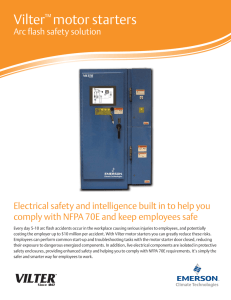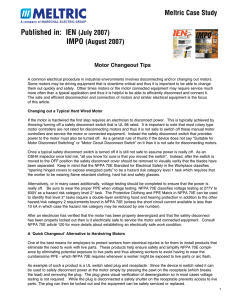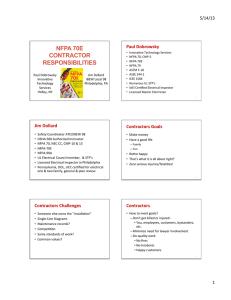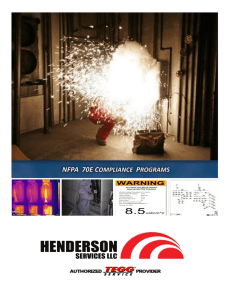What PPE Do I Need When Working on a MCC?
advertisement
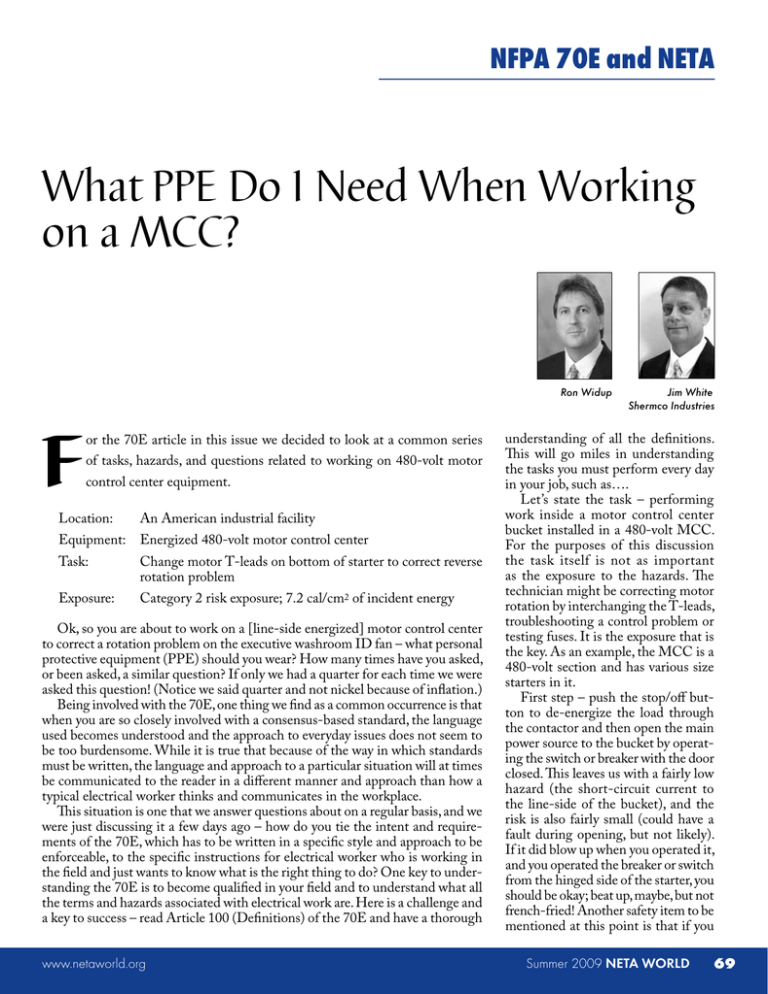
NFPA 70E and NETA What PPE Do I Need When Working on a MCC? F Ron Widup or the 70E article in this issue we decided to look at a common series of tasks, hazards, and questions related to working on 480-volt motor control center equipment. Location: An American industrial facility Task: Change motor T-leads on bottom of starter to correct reverse rotation problem Equipment: Energized 480-volt motor control center Exposure: Category 2 risk exposure; 7.2 cal/cm2 of incident energy Ok, so you are about to work on a [line-side energized] motor control center to correct a rotation problem on the executive washroom ID fan – what personal protective equipment (PPE) should you wear? How many times have you asked, or been asked, a similar question? If only we had a quarter for each time we were asked this question! (Notice we said quarter and not nickel because of inflation.) Being involved with the 70E, one thing we find as a common occurrence is that when you are so closely involved with a consensus-based standard, the language used becomes understood and the approach to everyday issues does not seem to be too burdensome. While it is true that because of the way in which standards must be written, the language and approach to a particular situation will at times be communicated to the reader in a different manner and approach than how a typical electrical worker thinks and communicates in the workplace. This situation is one that we answer questions about on a regular basis, and we were just discussing it a few days ago – how do you tie the intent and requirements of the 70E, which has to be written in a specific style and approach to be enforceable, to the specific instructions for electrical worker who is working in the field and just wants to know what is the right thing to do? One key to understanding the 70E is to become qualified in your field and to understand what all the terms and hazards associated with electrical work are. Here is a challenge and a key to success – read Article 100 (Definitions) of the 70E and have a thorough www.netaworld.org Jim White Shermco Industries understanding of all the definitions. This will go miles in understanding the tasks you must perform every day in your job, such as…. Let’s state the task – performing work inside a motor control center bucket installed in a 480-volt MCC. For the purposes of this discussion the task itself is not as important as the exposure to the hazards. The technician might be correcting motor rotation by interchanging the T-leads, troubleshooting a control problem or testing fuses. It is the exposure that is the key. As an example, the MCC is a 480-volt section and has various size starters in it. First step – push the stop/off button to de-energize the load through the contactor and then open the main power source to the bucket by operating the switch or breaker with the door closed. This leaves us with a fairly low hazard (the short-circuit current to the line-side of the bucket), and the risk is also fairly small (could have a fault during opening, but not likely). If it did blow up when you operated it, and you operated the breaker or switch from the hinged side of the starter, you should be okay; beat up, maybe, but not french-fried! Another safety item to be mentioned at this point is that if you Summer 2009 NETA WORLD 69

